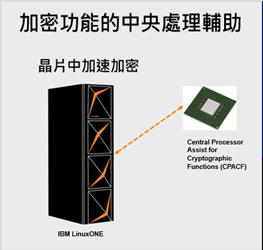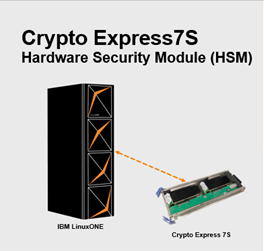For many people, IBM is almost synonymous with mainframe computers.
IBM has recently launched the newest generation of LinuxONE III Express. Let's see what future technologies are inside.
Elegant and Intelligent: A platform with high reliability and high availability
Delivered in stylish 19-inch racks, the IBM LinuxONE Express adopts a “no-mainboard design” and comes with CPC drawer (CPU and memory), I/O drawer (fiber channel card, network card, encryption/compression card, etc.), independent hybrid memory cube (HMC), and support elements. The service level agreement (SLA) of the component node service of this server is up to 99.9999, while the mean time between failures (MTBF) is greater than 30 years. A design like this delivers high reliability and high availability.
 Figure 1: Rack inside view
Figure 1: Rack inside view
Logical partition (LPAR) segregation is the infrastructure function that operates on each generation of LinuxONE processors. Unlike virtualization technology, LinuxONE can achieve complete physical segregation while maintaining the security of all partitions. This suggests that the LinuxONE with its “high reliability” and “high availability” can function as a database (DB) server and an application (AP) server on the same server. By integrating the most popular container technology, such as IBM CloudPak and Red Hat OpenShift Container Platform (OCP), and various applications, more innovative services can be created with the new generation of LinuxONE.

Figure 2: OpenShift Container Platform (OCP)
In addition, LinuxONE enables the establishment of effective protection for information security and internal data with the encryption/decryption and physical segregation features. The Central Processor Assist for Cryptographic Function (CPACF) and new, dedicated Crypto Express 7S, together with the hardware security module (HSM), enable services and applications to easily meet various regulatory requirements for information security.


Figure 3: Full-time CPACF and HSM
Unlike traditional mainframes that only support specific operating systems, the LinuxONE supports the Linux OS and over 3,000 types of open source software. In addition, each LinuxONE supports up to 2.4 million containers and 8,000 virtual machines (VMs).
This suggests that the brand-new LinuxONE comes with “architectural agility” and “openness” to provide more flexible support for private clouds, public clouds, and hybrid enterprise clouds.

Figure 4: LinuxONE ECO system
The CPU used in the LinuxONE is equipped with exclusive future technology — powerful computation capability for job workloads — to ensure no I/O performance drops by scheduling other workloads to the server running at maximum workload (running high-weight databases/high-computing applications).
For the exclusive future technology used in the CPU of the LinuxONE, each IFL (CPU unit of the IBM LinuxONE server) integrates over 23 x86 cores to reduce the total cost of ownership (TCO) by 27% within 5 years.[1]
[1] When running mixed workloads consisting of both open source and IBM proprietary software, IBM LinuxONE requires 23 times fewer cores than the compared x86 servers and delivers a 27% lower overall TCO over 5 years. This is an IBM internal study designed to replicate a typical IBM customer workload usage in the marketplace. Results may vary.

Figure 5: High-performance service level of the CPU
IBM has also introduced a special edition LinuxONE III Express to provide enterprises with the most appropriate application scenarios. The entry-level model supports running both database servers (IBM DB2, Oracle RAC One Node, Oracle RAC, etc.) or application servers (IBM WAS, Redhat Tomcat, Oracle WebLogic, etc.) on the LinuxONE platform, and the advanced-level model further supports OCP for users to experience the high performance of containers or Linux KVM.[2]
Together with the once-and-for-all server specifications, custom specifications accelerate the preparation time for implementation to meet the high-standard demand for “speed, stability, and agility” of enterprises today.
[2] Actual implementation is subject to the performance and demand assessment of the customer’s overall environment.

Figure 6: LinuxONE III Express
Users that have used IBM servers must understand the powerful performance of the LinuxONE. Whether you want to lower the software licensing fees (DB/AP), pursue high stability for service continuity, or establish information security services, the IBM LinuxONE is always the best choice.